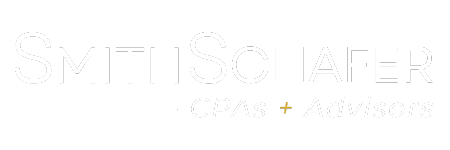Real-Life Example: You received your financial statements from your accountant and you are making money. That is great! Isn’t it? But what else are the numbers on the paper telling you? Is your hospitality company performing as well as its industry peers? Should you be doing better?
Utilizing benchmarks is an easy way to determine how well your hospitality company stacks up against others in your industry. Below are benchmarks regarding three major subgroups in the hospitality industry – restaurants, hotels & lodging, and golf courses:
Restaurants
Sales per square foot. This is a reliable indicator of a restaurant’s profit potential. Divide annual sales by the total interior square footage. Include storage, restrooms, the kitchen, etc. A full-service restaurant should have sales per square foot of $150 – $250 to break even or have a small profit. A limited-service (counter-service) restaurant should be in the $200 – $300 range for the same result.
Rent. The goal is to limit rent expense to 6% of sales or less. This number does not include other occupancy costs like insurance, real estate taxes, or common area maintenance fees. When those additional expenses are added, the total occupancy cost should be 10% or less. An occupancy cost above 10% is considered excessive and can seriously eat away at your profits.
Prime Cost. Generally considered the most important metric because the underlying costs are the most volatile. Keeping your prime cost in-check is a major step toward profitability. To calculate the prime cost, add the cost of sales to payroll costs and divide by total sales. Full-service restaurants should have a prime cost of about 65% or less, while limited-service restaurants should be closer to 60% or less.
Additional Cost of Sales Metrics
- Food – approximately 30% of total food sales
- Liquor – 18% to 20% of liquor sales
- Bottled beer – 24% to 28% of bottled beer sales
- Draft beer – 15% to 18% of draft beer sales
- Wine – 35% to 45% of wine sales
- Soft drinks – 10% to 15% of soft drink sales
- Management Salaries (of total sales) – 10% or less
- Payroll Cost (of total sales)
- Full – 30% to 35%
- Limited – 25% to 30%
- Hourly Employees Gross Payroll (of total sales)
- Full – 18% to 20%
- Limited – 15% to 18%
Hotels & Lodging
The standards listed below are only intended to include the room rental portion of the hotel & lodging industry. If your hotel or lodging business also has a food and beverage component, refer to the section above.
Occupancy. The number of rooms sold divided by the number of rooms available. The occupancy rate is the highest it has been in nearly 30 years and this means good news for average daily rate and revenue per available room growth, according to a report from Marcus & Millichap. The national average occupancy rate for 2018 is 66.1%. In 2018, Minnesota’s average occupancy rate was 56.3% according to STR, Inc.
Average Daily Rate (ADR). Net room revenue divided by the total number of rooms sold. The national average ADR is $128.94 as of February 2019. This is the national average among all market segments – luxury, upscale, mid-price, economy, and budget. The Minnesota ADR average is slightly lower than the national average at $106.97.
Revenue per Available Room (RevPAR). Net Room Revenue divided by number of rooms available. The national average RevPAR reached $85.96 in 2018. The Minneapolis market is in line with the national average at $82.80. However, the Minnesota RevPAR average is $60.21.
Golf Courses
How much should you be spending on course maintenance and other expenses? According to Club Benchmarking, golf courses all across the country consistently spend about the same percentage of their gross profit (the amount of money a course has available for funding fixed operating expenses) on these six areas:
- Course Maintenance
- General & Admin Expenses
- Fixed Charges (Overhead)
- Labor
- Buildings & Maintenance
- Sports & Recreation.
Approximately 30% of a course’s gross profit is dedicated to maintenance. However, if the course is a golf-only club, this number increases to 44%. For full-service country clubs offering additional sports and recreation facilities, approximately 12% of gross profit is spent on upgrading and maintaining those additional sporting areas. A full-service club spends approximately 4% more on buildings and building maintenance than golf-only clubs, about 19% versus 15%. General and Administrative costs should be between 16% and 21%, and Labor should be between 10% and 15%. Overhead such as insurance, real estate taxes, and interest expense should be about 9%.
CONTACT US
Every hospitality company is unique and the above standards will not apply to all businesses. The metrics should be used as a guideline. Our Hospitality Group helps businesses thrive in an industry known for high turnover, intense competition, tight controls, and high costs. Our Hospitality Group is committed to serving over 100 Minnesota hospitality entities. We take great pride in consulting on various industry-specific issues as well as the broader needs of these businesses and their owners.


![Hospitality Businesses Guide to Local Sales Tax [Minnesota]](https://www.smithschafer.com/wp-content/uploads/2018/10/shutterstock_277863239-1-400x250.jpg)
